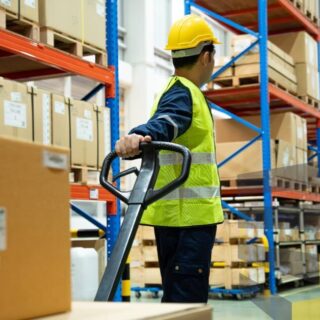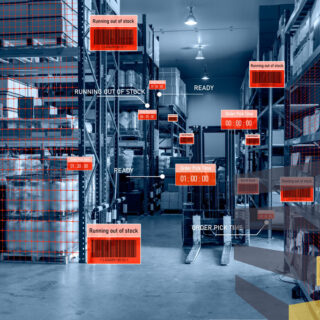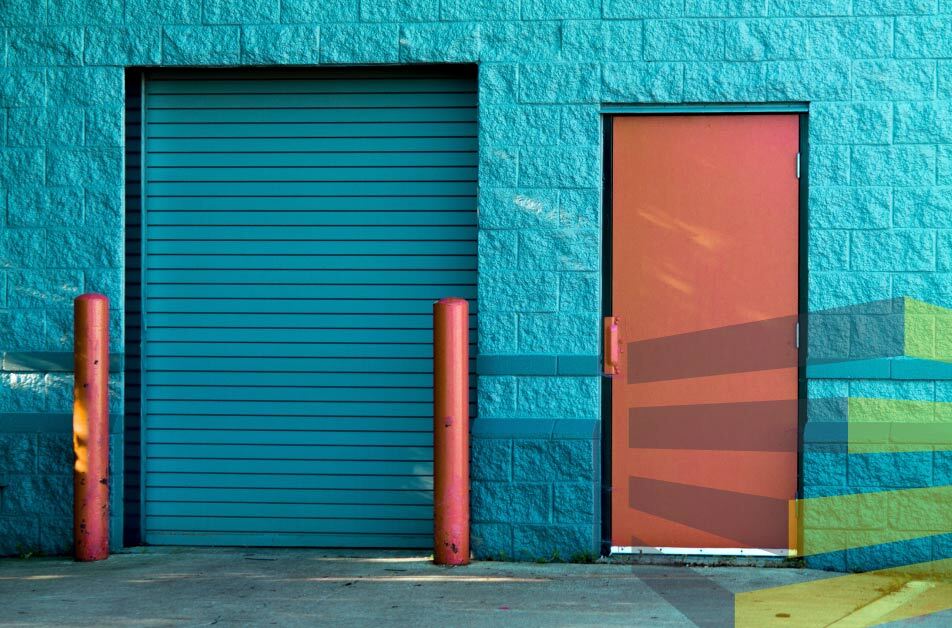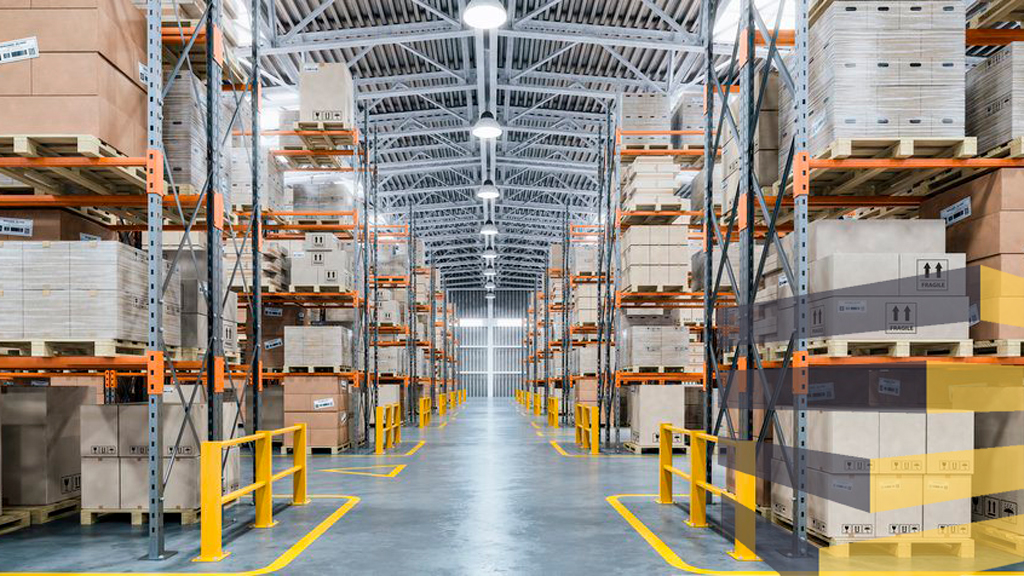Operational safety is a fundamental consideration in any warehouse or distribution center, regardless of size or function. Among the many elements that can be critical to maintaining the security of a facility are warehouse safety barriers.
Along with signage and floor markings, warehouse guardrails can be an important part of any warehouse layout, especially if there is a significant flow of people and vehicles in the space.
SEE ALSO: Warehouse layout design: 5 critical zones for productivity.
Warehouse protection barriers can range from guardrails and bollards to column guards and security gates, and the choice of which one to install will depend on your needs.
If you need us to supply or install warehouse protection barriers in Brazil, Mexico or the United States, please contact us, contact us at.
Why are warehouse protection barriers necessary?
In many warehouses and distribution centers, there is a constant flow of people, equipment and heavy vehicles, such as forklifts.
Therefore, the installation of protective barriers in warehouses can be crucial in keeping people safe. Not to mention that it helps prevent damage to valuable facilities such as warehouse racking.
When planning a warehouse facility, it is important to understand how the facility will operate and to decide where protective barriers will be placed to ensure smooth and safe operations.
Given the investment involved in setting up a warehouse or distribution center, and how costly it can be to get it wrong, many companies are looking to work with an experience provider to help them set up their operations.
This will include distribution planning, supply and installation of warehouse protection barriers, shelving, signage and floor markings, among other things.
4 reasons why you should use warehouse guardrails
Four reasons for using warehouse protection barriers are highlighted below:
1) Comply with the standards established for warehouses.
A warehouse operations manual indicates, among other things, the steps to be followed for loading and unloading, labeling and organizing products, but it also includes mandatory safety rules. Failure to follow these procedures means being forced to suspend operations.
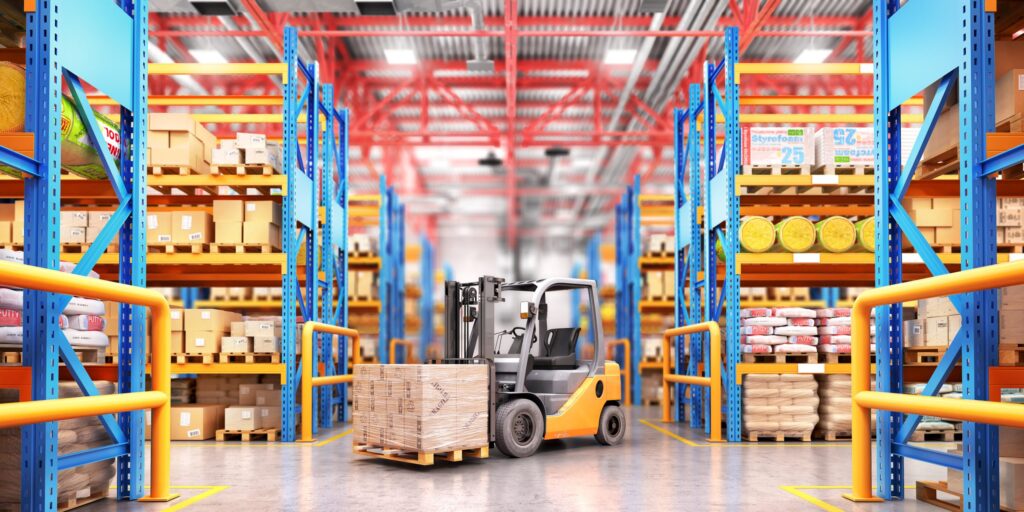
Each territory has its own occupational risk prevention regulations. In the case of warehouses, this usually involves aisle widths and warehouse floor markings, racking load capacity, signage, personal protective equipment and, of course, warehouse protective barriers.
Safety barriers are particularly suitable for marking off areas that may endanger workers, such as areas under construction, spaces where hazardous materials are unpacked or where heavy machinery is used.
2) Caring for people
Whether with rigid guardrails, flexible bollards or even automated safety gates, delimiting and restricting certain dangerous areas is crucial to take care of the people working in the warehouse. Almost all accidents involve human error, so this is where the focus of risk prevention lies.
The protective barriers in the warehouses will indicate to the worker where he/she should not cross. This will prevent accidents and raise staff awareness. While some of these barriers may be in clearly hazardous locations, others will be in areas where the risks are not so obvious to the untrained eye.
Generally, protective barriers are yellow or orange because these bright colors help people to be alert and cautious about the area they enclose or restrict. It is important to make sure to follow a clearly defined and communicated color code so that everyone is aware of its meaning.
3) Protecting assets
Safety barriers not only serve to restrict areas or spaces that may be dangerous for your personnel, but also to protect the products and materials you store in your warehouse. After all, it is the lifeblood of your business.
Goods are constantly moving within warehouses, when they arrive, they need to be organized or are being prepared for distribution. Every time they move, there is the possibility of an accident, such as hitting a shelf and causing a collision.
No one wants to suffer inventory losses due to carelessness, so installing high-quality warehouse protection barriers is a necessary step to ensure that goods are not bumped, spilled or broken. In addition, some goods have access restrictions or conditions that will be affected if people enter your storage area.
4) Maintain the facilities
Racking, pallets, ladders, forklifts and other internal warehouse transport vehicles can be damaged if safety barriers are not installed. In addition, fixed installations such as columns, walls and doors are not exempt from damage and are very difficult to replace.
Damage to infrastructure is particularly problematic, as the machinery used in the facility is heavy and powerful. It is not easy to replace and refurbish walls and columns, as they constitute the very structure of the building. Over time, their structural integrity may be compromised, at which point the entire warehouse will need to be shut down for repair.
The machinery itself can also be damaged in collisions, especially at extremities such as ladder legs, forklift truck tips or pallet rack legs. These relatively weak parts of otherwise durable and robust equipment can, if damaged, cripple complex procedures.
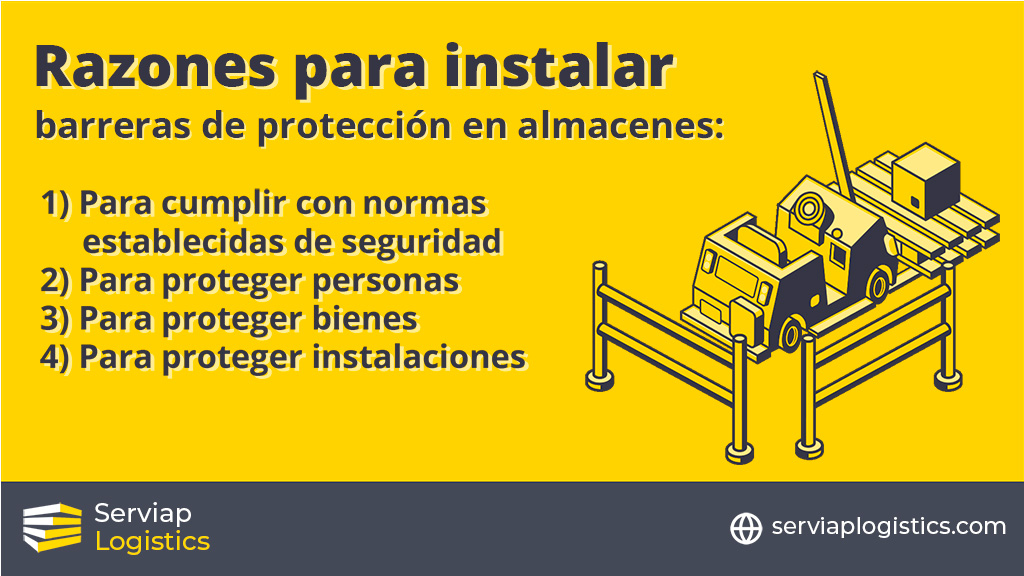
Considerations when choosing protective barriers for warehouses
- Be clear about your needs. For example, you can choose between rigid and flexible guardrails, buried or bolted bollards, column guards, retractable barriers and much more.
- Check the quality and materials of the safety barriers in your warehouse and that they meet the standards required by local regulations.
- Check that they are correctly positioned, at the correct height and with a certain distance between them.
- Conduct regular inspections to ensure that they are still of the quality required to ensure the protection of your personnel, products and facilities.
- Hire an expert to sell and install warehouse guardrails. They will help you save costs and maintain safety.
Serviap Logistics supplies protective barriers for warehouses
At Serviap Logistics we supply and install warehouse protection barriers in Brazil, Mexico and the United States. We also offer other services such as shelving, signage and floor marking.
We also offer project management and can assist you in all aspects of the installation, renovation or relocation of a warehouse.
We are committed to service excellence and meet the highest safety standards wherever we operate, including OSHA certification in the United States. Our satisfied customers come from a wide range of industries, including automotive, e-commerce and wholesale.
Contact us at for more information on how we can help you.


